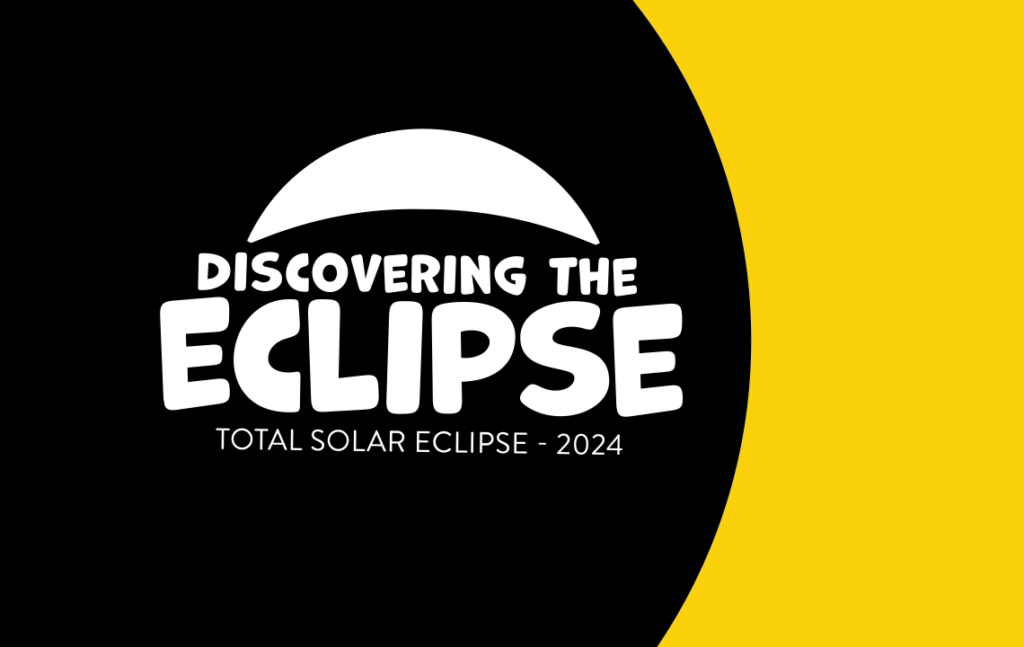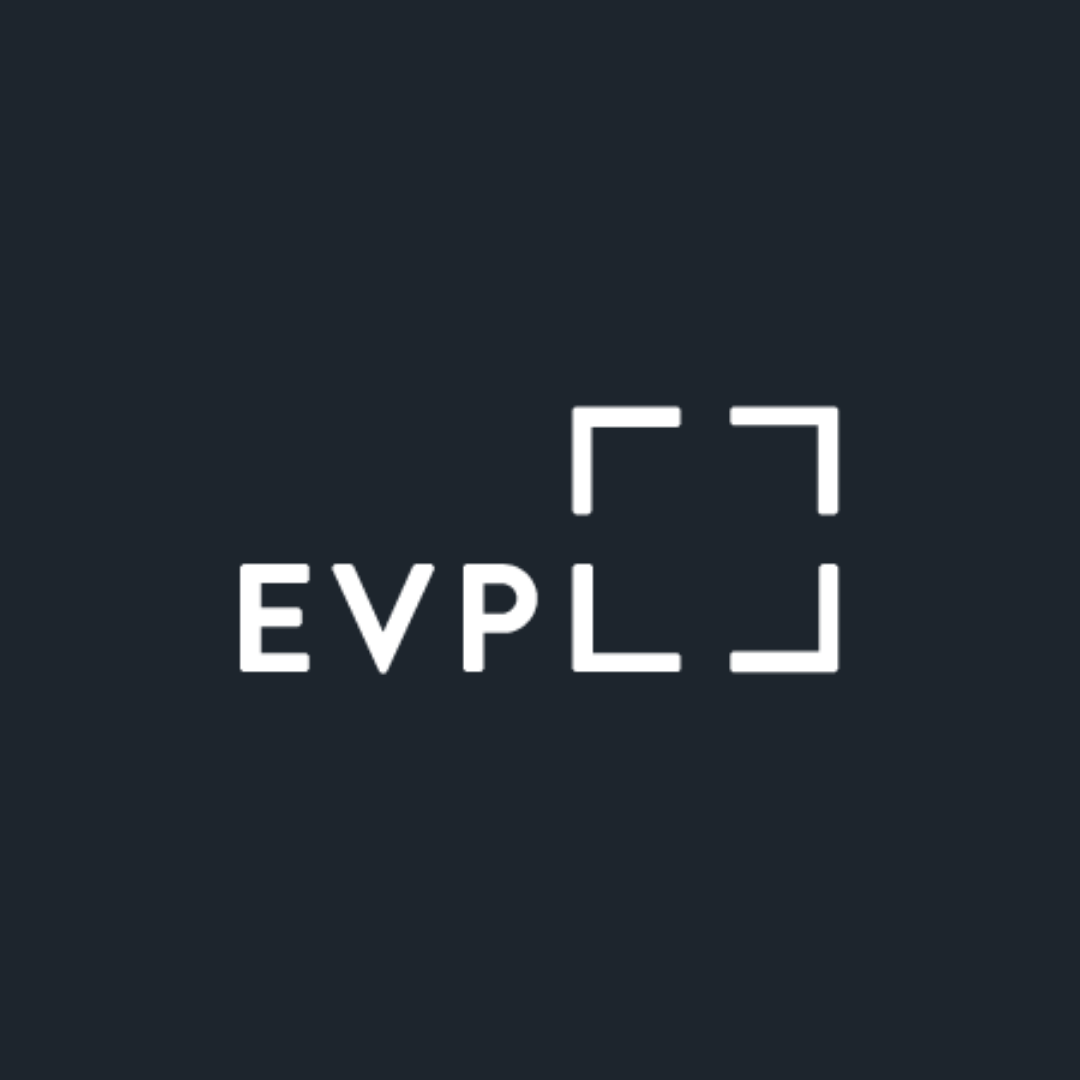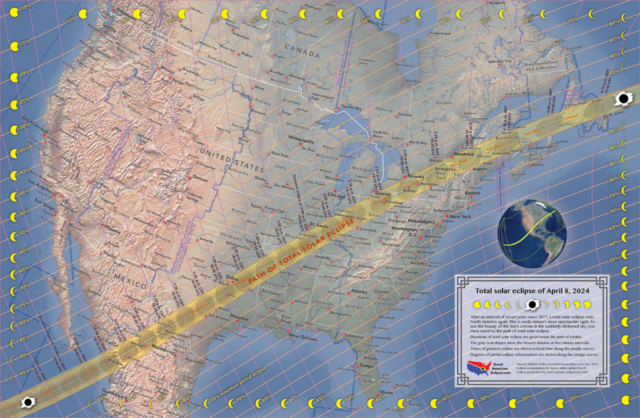Everything you need to know about the April 8 Total Solar Eclipse
On Monday, April 8, 2024, a total solar eclipse will cross North America, passing over Mexico, the United States, and Canada, with the Evansville area directly in its path. Discovering the Eclipse, an Evansville Vanderburgh Public Library initiative, will provide the opportunity to learn about the science of the eclipse, through programs, activities, and more leading up to April 8. Due to the influx of visitors to the area to see the Total Solar Eclipse, all EVPL locations will be CLOSED on Monday, April 8.
JUMP TO: ECLIPSE GLASSES | PROGRAMS AT EVPL | BOOKLET | BOOKLET EN ESPAÑOL | ABOUT THE ECLIPSE | SAFETY | GLOSSARY | RESOURCES

Eclipse glasses
Thanks to the generous support of the EVPL Foundation, EVPL will be giving away eclipse glasses.

Learn more about the EVPL Foundation
Here’s how to get your pair (while supplies last!):
- Visit any EVPL location to receive a pair of eclipse glasses
-
Library users may also pick up a pair of eclipse glasses for family not present
-
You do NOT need a library card to get glasses
-
If you need a large quantity of glasses, please contact our Programming Department: Call 812.428.8200 ext. 1440 or email programming@evpl.org
Other places to get eclipse glasses:
- Explore Evansville has rounded up a list of places to purchase eclipse glasses
- Visit Indiana has an exclusive pair available for purchase
- The State of Indiana has tips on how to buy a pair of safe eclipse glasses
Programs at EVPL
To learn more about and celebrate the upcoming eclipse, we’re hosting a series of programs throughout February, March, and April.
SolarFest
There will be crafts, storytime, science activities, and more to help you learn about the sun and get ready for the eclipse. All ages are welcome to participate in the eclipse-themed storytime, crafts, and science activities. We will also provide a solar telescope for safe sun viewing and offer information on citizen science and making scientific observations on the day of the eclipse, April 8.
- Saturday, March 16 at 2:00 pm • EVPL West
- Tuesday, March 19 at 4:00 pm • EVPL East
- Monday, March 25 at 4:30 pm • EVPL Central
- Tuesday, March 26 at 10:00 am • EVPL Oaklyn
- Wednesday, March 27 at 3:00 pm • EVPL Red Bank
- Thursday, March 28 at 2:00 pm • EVPL Stringtown
- Saturday, March 30 at 1:00 pm • EVPL North Park
- Thursday, April 4 at 4:30 pm • Washington Square – McCollough
Planets, Presidents, and Pre-Contact Peoples: Trivia Night*
- Monday, February 19 at 6:00 pm • Angel Mounds State Historic Site
- Registration required
EVPL @ Family Free Day
- Saturday, February 24 at 9:00 am • Wesselman Woods (free admission!)
Virtual Author Talk: American Eclipse by David Baron*
- Monday, March 4 at 11:00 am • EVPL East & EVPL Virtual
- Registration required
Eclipse Entertaining: Host Your Own Party!*
- Wednesday, March 6 at 6:00 pm • EVPL Central
- Registration required
Total Eclipse of the Sun with NASA Ambassador Amanda Scurry
- Saturday, March 9 at 3:00 pm • EVPL Oaklyn
Eclipses and Humans: Science, Shock, and Awe
- Sunday, March 10 at 2:00 pm • EVPL Central
The Twilight Saga: Eclipse | Watch Party & Cookie Decorating
- Wednesday, March 13 at 5:00 pm • EVPL West
Teen Sun Printing
- Tuesday, March 19 at 3:30 pm • EVPL Central
Moon Viewing
- Wednesday, March 20 at 6:00 pm • EVPL Red Bank
Teen Eclipse Scavenger Hunt
- Thursday, March 21 at 3:30 pm • EVPL Central
2024 Total Solar Eclipse: Making the Most of a Once in a Lifetime Event
- Saturday, March 23 at 11:00 am • EVPL Central
Eclipse Chalk Art
- Monday, March 25 at 12:00 pm • EVPL East
Constellation Jars
- Tuesday, March 26 at 4:00 pm • EVPL Red Bank
Family Movie | Apollo 13 (PG)
- Wednesday, March 27 at 1:30 pm • EVPL East
Sun Printing
- Thursday, March 28 at 2:00 pm • EVPL Red Bank
Solar Art
- Friday, March 29 at 3:30 pm • Washington Square – McCollough
EVPL @ Family Free Days
- Saturday, March 30 at 9:00 am • Wesselman Woods (free admission!)
Pinhole Eclipse Viewer
- Monday, April 1 at 4:00 pm • EVPL Red Bank
Teen Solar Eclipse Kindness Rock Painting
- Friday, April 5 at 3:30 pm • EVPL Central
Storytime Solarbration
- Saturday, April 6 at 11:00 am • Your Brother’s Bookstore
Eclipse Watercolor
- Saturday, April 6 at 1:30 pm • EVPL Oaklyn
The Eclipse: Twilight Edition
- Wednesday, April 10 at 4:00 pm • EVPL North Park
Galaxy Series*
- Wednesday, April 10 & Thursday, April 11 at 4:30 pm • EVPL Stringtown
- Registration required
Discovering the Eclipse Booklet
Discovering the Eclipse Booklet en Español
About the eclipse
According to NASA, a total solar eclipse happens when the Moon passes between the Sun and Earth, completely blocking the face of the Sun. People viewing the eclipse from locations where the Moon’s shadow completely covers the Sun – known as the path of totality – will experience a total solar eclipse. The sky will darken, as if it were dawn or dusk. Weather permitting, people along the path of totality will see the Sun’s corona, or outer atmosphere, which is usually obscured by the bright face of the Sun.

Safety
Is it safe to look at the sun during a Total Solar Eclipse?
No. You should never look directly at the sun. There will be a short period during the eclipse where the sun will be entirely covered by the moon, but we do not recommend looking without appropriate eye protection, as the re-emergence of the sun will be from total darkness.
What equipment is appropriate for viewing the eclipse?
Safe solar viewing glasses, also known as “eclipse glasses” or a handheld solar viewer are acceptable ways to view the eclipse. Do not look directly at the sun without eye protection. The library and other community locations will have a limited supply of glasses for the public to use. Make sure to check your equipment before using it – if scratched or damaged, do not use it. Be mindful of children and always supervise their use of solar viewing devices to protect their eyes.
Another way to view the eclipse is indirectly. You can use a pinhole projector to project an image of the sun onto another surface.
Please note that even with safe solar viewing glasses, you should not view the eclipse through cameras, binoculars, or telescopes. Only if the equipment has the correct solar filters themselves can you look through them. Not doing so will cause serious eye damage.
What else should I be mindful of?
If you plan on being outside for a long period of time, don’t forget sunscreen and water.
Remember that this event will attract a large number of people to the Evansville region and that there will be closures and heavy traffic the day before and the day of the eclipse. If you are planning to utilize a public space, please check that location’s hours and postings regarding the eclipse as they may have different operating hours and protocols due to capacity and infrastructure.
Glossary
- Antumbra: The extension of the Moon’s shadow beyond the umbra. Within the antumbra, the Sun appears larger than the Moon, which is visible in silhouette. An observer standing in the antumbra sees an annular eclipse.
- Corona: The Sun’s upper atmosphere, visible as a pearly glow around the eclipsed Sun during totality. Its shape (sometimes elongated, sometimes round) is determined by the Sun’s magnetic field and is linked to the sunspot cycle.
- New Moon: The lunar phase when the Moon is located in the same direction in the sky as the Sun. New Moon is the only lunar phase during which an eclipse of the Sun can occur.
- Partial eclipse: A solar eclipse where the Moon covers only a portion of the Sun. A partial eclipse precedes and follows totality or annularity, but a partial can also occur by itself. A partial solar eclipse is visible over a wider swath of Earth than is totality or annularity.
- Penumbra: The portion of the Moon’s shadow in which only part of the Sun is covered. An observer standing in the penumbra sees a partial solar eclipse.
- Sunspots: Dark regions on the Sun where magnetic fields are bundled together and are so strong that the flow of hot gas from the Sun’s interior to the surface is inhibited. The spots appear dark because their temperature is about 1,000° Celsius (1,800° Fahrenheit) cooler than the photosphere that surrounds them.
- Total eclipse: A solar eclipse where the apparent diameter of the Moon is large enough to completely cover the Sun’s photosphere (even if only momentarily) and reveal the faint solar corona.
- Totality: The maximum phase of a total solar eclipse, during which the Moon’s disk completely covers the Sun’s bright face. Totality occurs between second and third contact. It can last from a fraction of a second to a maximum of 7 minutes 31 seconds.
- Umbra: The darkest part of the Moon’s shadow, within which the entirety of the Sun’s bright face is blocked. Within the umbra, the Moon appears larger than the Sun. An observer standing in the umbra sees a total solar eclipse.
- Umbraphile: A solar-eclipse aficionado; a person who will do almost anything, and travel almost anywhere, to see totality. Another term for an umbraphile is “eclipse chaser.”
Resources

200 SE Martin Luther King Jr. Blvd
Evansville, Indiana 47713
Administration: ceo@evpl.org
Card & Account: circulation@evpl.org
Feedback & Ideas: marketing@evpl.org




